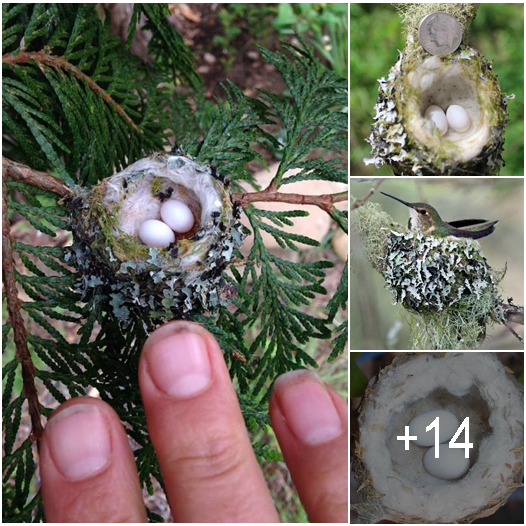
Some hummingbird species are endangered, they are absolutely tiny, fragile birds are only a few inches long and their eggs are smaller than a jelly bean.

Here’s some tips on how to spot them
“Hummingbird eggs are tiny, about the size of jelly beans! Please remember to carefully check for nests before you trim trees and shrubs.’
2
34 hummingbird species (10%) are listed as “critically endangered,” which means they have a 50/50 chance of extinction within the next ten years.
So keeping an eye out for their tiny nests while pruning is essential for their survival.

The nests usually are usually built on a branch with a downward-slant, and often you will find them on a branch hanging over running water or open space, according to The Hummingbird Project.
They construct their nests out of spider webs, lichen and plant matter, meaning they are extremely delicate. The lichen also does a good job of camouflaging their nests.

Hummingbirds, on average, flap their wings between 50-80 beats per second, making them a literal blur to the human eye, if you have ever seen a hummingbird’s wings flapping, its usually because the video has been slowed down or the hummingbird is landing.
Their metabolism is just as speedy as their wings, and their weight can change drastically over the day as they eat and burn up energy; because of this, they consume anywhere between half to 8 times of their weight in sugar daily, and the average hummingbird feeds 5-8 times per hour, thats a lot of their waking day spent feeding!
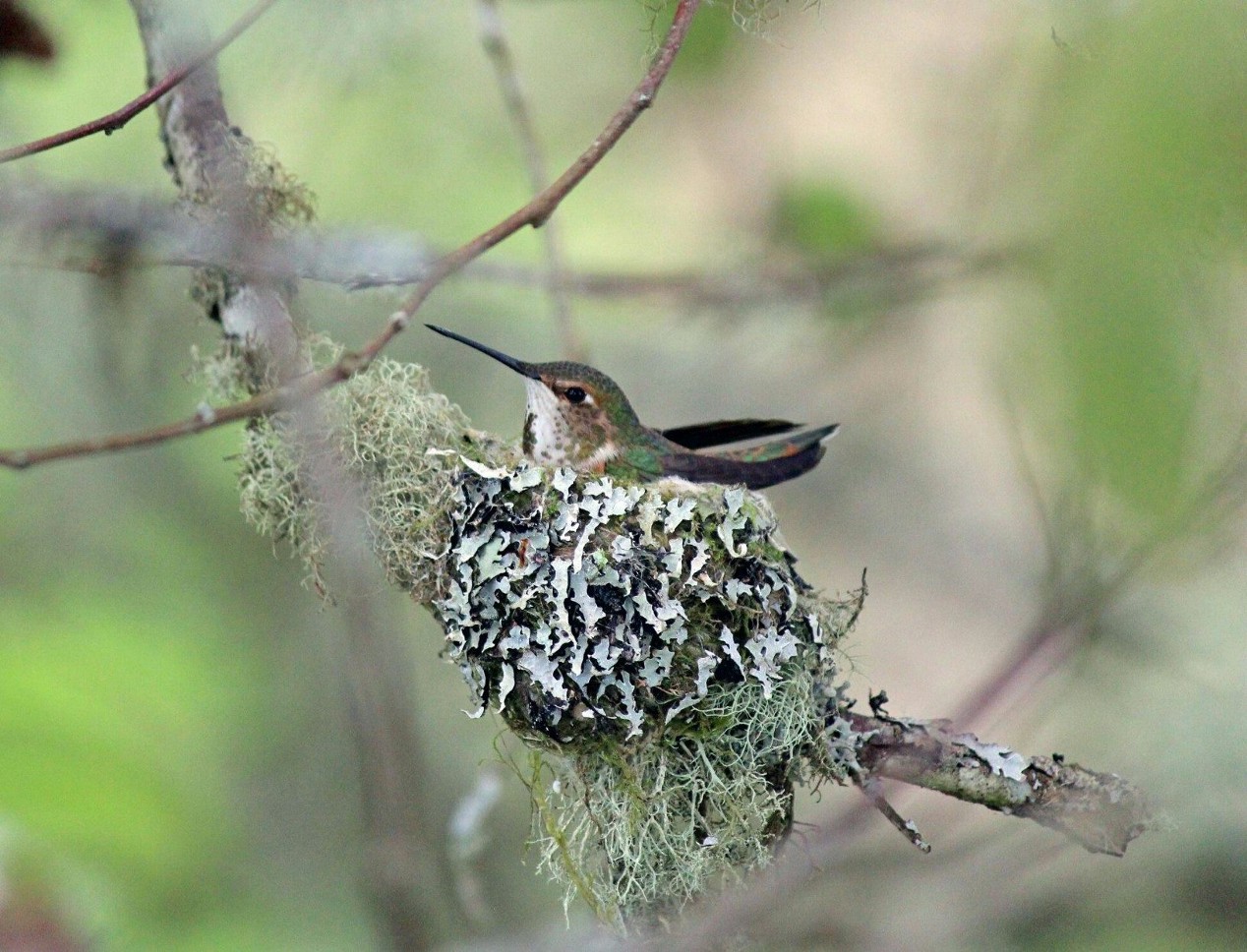
Their hearts can beat over 1200 times per minute! If you compare that to the average human whose heart beats around 80 times per minute, that means every time our heart beats once, the hummingbirds heart beats 20 times, it’s crazy!

Sułoszowa, a Polish village of around 6,000 people located in the Olkuska Upland, less than 30 km northwest of Kraków, has been dubbed ‘Little Tuscany’ because of its unusual layout.

The village of Sułoszowa has been around for many years, but it only recently started attracting international attention after bird’s eye photos and videos went viral on social media. Millions of people around the world were mesmerized by the unusual layout of the rural settlement – hundreds of houses on either side of a singular street, snaking through multi-colored agricultural fields as far as the eye can see. Every one of the 5.819 inhabitants – according to a 2017 census – lives on the same street, which stretches for over 9 kilometers.
Aerial photos of Sułoszowa originally went viral in Poland back in 2021, but this month a drone-shot video of the Polish village garnered international attention. People were amazed by the unique look of the village surrounded on all sides by patches of agricultural land, as well as by the fact that everyone just built their home along the main road, instead of expanding outwards.
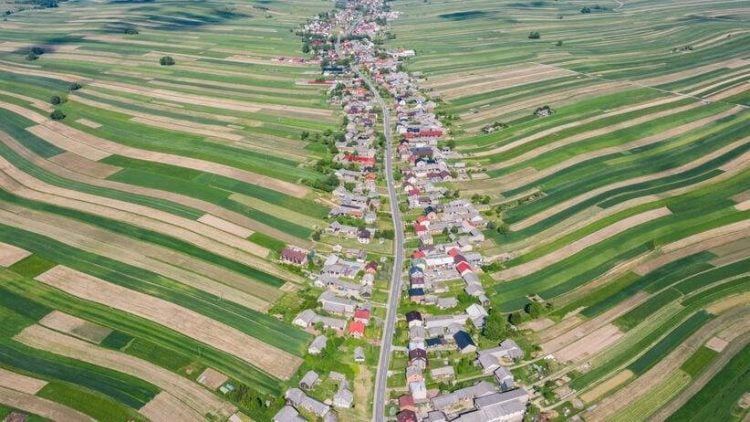
The linear, single-street layout of Sułoszowa was dubbed ‘bizarre’ by major international news outlets like Mail Online and The Sun, but to the Poles commenting on national news websites, it’s just a typical Polish village. Apparently, having a single road passing through a village is not at all unusual in the central European country, but the aerial viewpoint just makes it look more impressive.

“The normal layout of a traditional street village, only the village is very long,” one person commented.
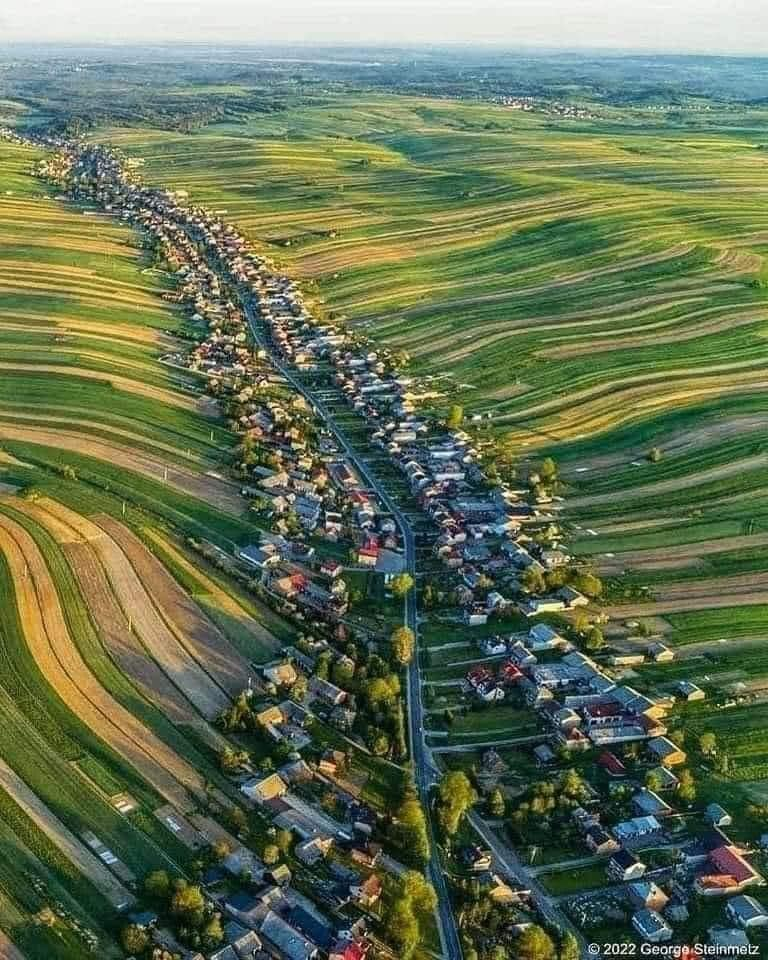
“Someone explain to me what this unusual arrangement is. Ordinary street,” someone else wrote.
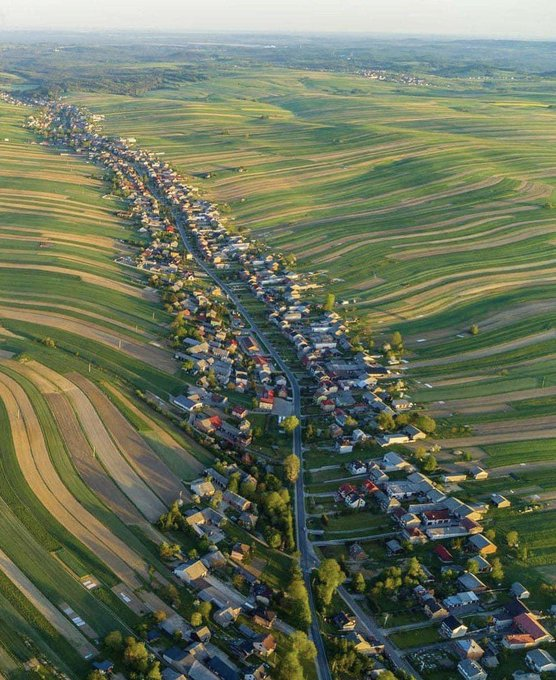
While having a singular street may not be that uncommon for European villages, its location in the middle of a natural mosaic of agricultural fields is definitely not something you see every day. Some have gone as far as to compare it to Italy’s Tuscany.



